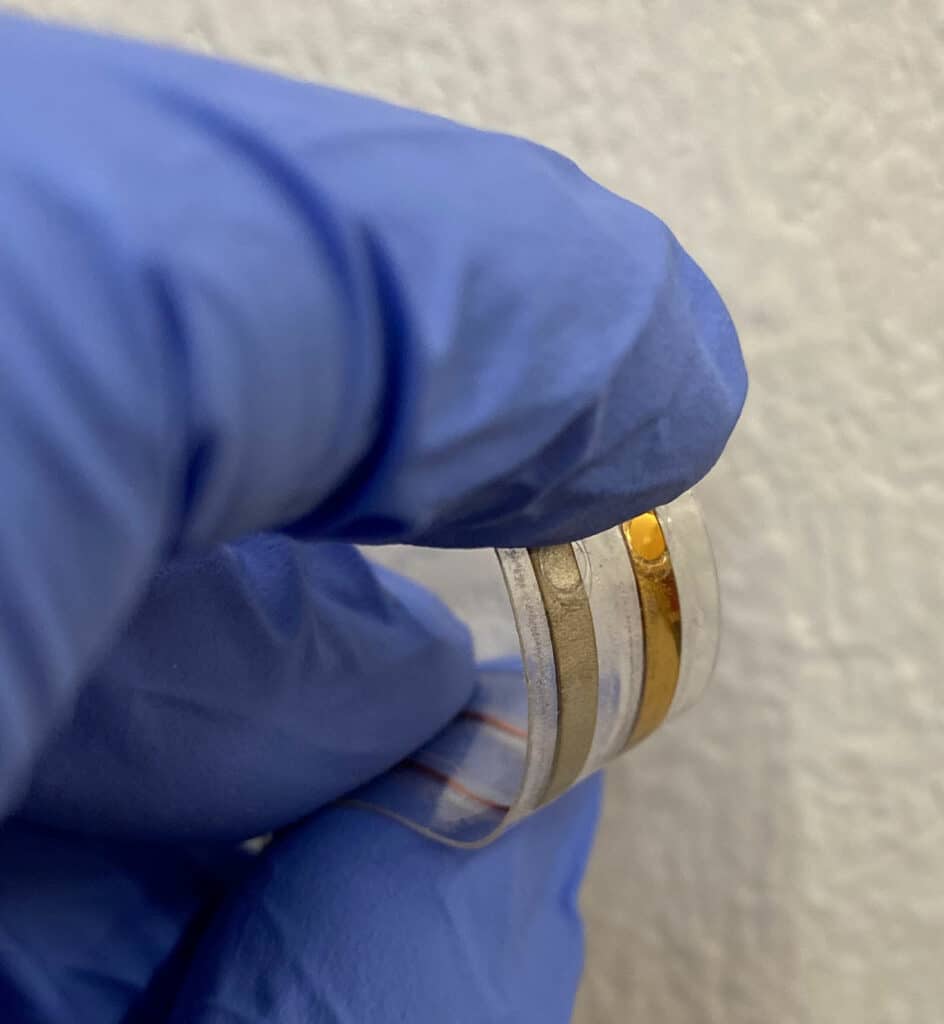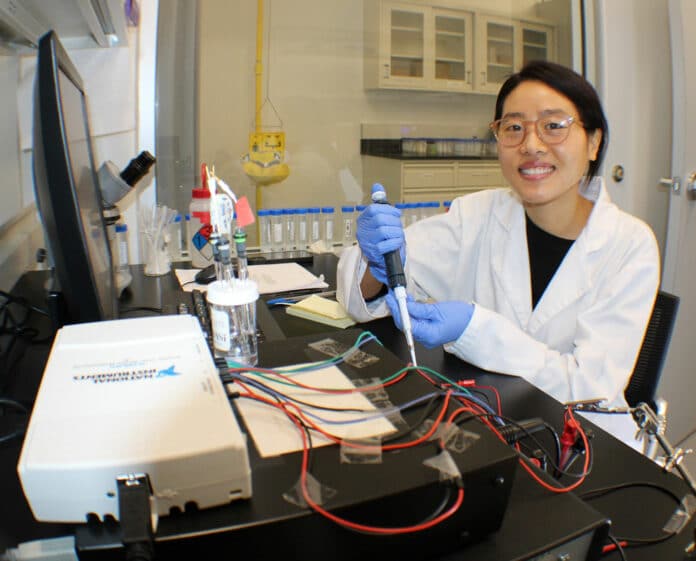Forget those expiration dates! A new miniature pH sensor can tell when food has spoiled in real-time.
Developed by Khengdauliu Chawang, a graduate student at SMU (Southern Methodist University), the flexible pH sensor is only 2 millimeters in length and 10 millimeters wide. This makes it possible to incorporate the sensor into current food packaging methods, such as plastic wrapping.
Typically, much bulkier meters are used to measure pH levels, so they are not suitable to be included in every package of food to monitor its freshness in real-time.
According to the Food and Agriculture Organization of the United Nations, roughly 1.3 billion metric tons of food produced around the world go uneaten every year. Nearly 40% of food is wasted in the United States. Not only does food waste contribute to food insecurity and lost profits for food manufacturers, but food wastage is also bad for the environment. Transporting all of that uneaten food in the U.S. contributes to carbon dioxide emissions into the atmosphere.
“The need to prevent food waste motivated me to think of a device that is not expensive or labor-intensive to develop, is disposable, and can detect freshness levels,” said Chawang, an Electrical and Computer Engineering graduate student who is originally from Nagaland, a remote region in India where the population relies heavily on agricultural crops.

She says food freshness level is directly correlated to pH levels. Sudden pH changes in food storage during production and shipping can indicate possible food spoilage. The pH level is measured by the concentration of hydrogen ions found in a substance or solution.
The electrodes within the pH sensor can detect the electrical charge generated by the concentration of hydrogen ions inside food, converting the level to pH values using what is known as the Nernst equation.
“The pH sensors we developed work like a small wireless radio-frequency identification device – similar to what you find inside your luggage tag after it has been checked at airports or inside your SMU IDs. Every time a food package with our device passes a checkpoint, such as shipping logistics centers, harbors, gates, or supermarkets’ entrances, they could get scanned, and the data could be sent back to a server tracking their pH levels,” said Khengdauliu Chawang, Ph.D. student at SMU’s Lyle School of Engineering and lead creator of the device. “Such configuration would allow continuous pH monitoring and accurately detect freshness limits along the entire journey – from farms to consumers’ houses.”
Chawang’s pH sensor is made with a very small amount of biocompatible materials and uses printing technologies on flexible films. “The entire process is similar to printing newspapers. The processing does not require expensive equipment or a semiconductor cleanroom environment,” said professor J.-C. Chiao, who supported the sensor development. “Thus, the costs are low and make the sensor disposable.”
Chawang has successfully tested the pH sensor on food items like fish, fruits, milk, and honey. They also investigated if the device could be used to ensure reliable fermentation for cheese and wine. Additionally, Chawang envisions the technology’s potential applications in detecting early warning signs of sepsis or wound infection.
